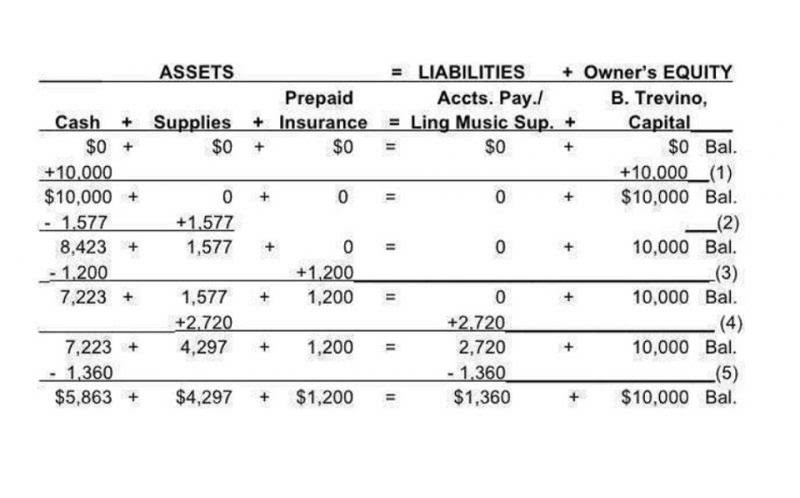The CIP procedures dictate the proper recording of construction costs in financial statements. In the company’s balance sheet, construction in progress is most commonly found under the head of PP & E( Plant, Property & Equipment). In this blog, we will discuss the instances when construction in progress cash flow is used by the business.
Why Do You Need a CIP Account Management Software like eSub?
- Accurate construction-in-progress accounting is essential for project transparency, compliance, and financial stability.
- It’s also crucial when a company needs to secure bank loans, demonstrate bond capacity, and receive audit and assurance services.
- This step helps with financial reporting, updating how these costs are perceived and managed.
- An accountant will report spending related to the construction-in-progress account in the “property, plant, and equipment” asset section of the company’s balance sheet.
A CFO, or Chief Financial Officer, is a senior executive responsible for managing the financial actions of a company. This includes financial planning, risk management, record-keeping, and financial reporting. Essentially, a CFO plays a crucial role in guiding the financial strategy of a business.

Professional Services
The percentage-of-completion method relies heavily on accurate progress measurement, which can be achieved through various means such as milestones, cost-to-cost, or units-of-delivery methods. Milestones are predefined stages of the project, and revenue is recognized as these stages are completed. The cost-to-cost method compares the costs incurred what is cip in accounting to date with the total estimated costs, while the units-of-delivery method is based on the number of units delivered or installed. Each of these methods has its own set of advantages and is chosen based on the nature of the project and the reliability of the measurement criteria. Understanding CIP accounting is essential for project managers, accountants, and stakeholders to make informed decisions and maintain financial health throughout the project’s lifecycle.

Effective Cost Control and Budgeting
Instead of being ongoing expenses, they’re now considered assets that will provide value over time. This transition is essential to meet accounting standards and allows businesses to log their investment in new constructions on their books accurately. CIP accounting is important to a construction company’s accounting system software because it allows businesses to track the progress of a construction project and monitor its costs. By keeping accurate records of expenses, businesses can ensure that projects are completed within budget and on time.

Recognizing revenue from Construction-in-Progress (CIP) projects is a nuanced process that requires careful consideration of various accounting principles and industry standards. bookkeeping and payroll services One widely adopted method is the percentage-of-completion approach, which allows companies to recognize revenue based on the project’s progress. This method aligns revenue recognition with the actual work completed, providing a more accurate reflection of the project’s financial status. For instance, if a project is 60% complete, 60% of the total contract revenue can be recognized. This approach not only smooths out revenue over the project’s duration but also helps in matching costs with revenues, thereby offering a clearer picture of profitability.
Compliance and Audits
Business A receives a $100,000 bill from Builder’s Warehouse for construction materials. 1) On March 11, 2021, Business A received a $100,000 bill from Builder’s Warehouse for construction materials. Unplanned costs from price changes or delays affect CIP accuracy and profitability.
Best Construction Estimating Software for Contractors and Builders
Once construction is complete, this $150,000 would transfer to the “Building” fixed asset account, where it will begin depreciating over its useful life. However, you must know that the nature of costs and revenues in every construction contract varies. According to the matching principle of accounting of accrual accounting, the expenses related to certain revenues must be recorded in the same period when they were incurred. All the costs of assets under construction are recorded in the ‘Construction In Progress Ledger Account.’ They are shifted to the asset side of the balance sheet from the ledger. It is an accounting term used to represent all the costs incurred in building a fixed asset. Construction in progress, or most commonly known as CIP, is a fixed asset account with a natural debit balance.
- With various teams working on different projects, ensuring that everyone is on the same page can be challenging.
- By assigning specific codes to various cost categories, such as labor, materials, and subcontractor fees, companies can achieve a granular level of tracking.
- Construction companies and contractors understand construction projects can span months or years before completion due to the scope of work.
- Business A receives a $100,000 bill from Builder’s Warehouse for construction materials.
- CIP accounting, or Construction-in-Progress accounting, is an essential aspect of accounting for businesses in the construction industry.
- A CFO, or Chief Financial Officer, is a senior executive responsible for managing the financial actions of a company.
In conclusion, Viindoo is a comprehensive accounting software solution that can assist construction companies with their CIP accounting needs. We hope you can apply the above information about CIP accounting to your accounting process. The company would record a depreciation expense of $22,500 in each accounting period over the building’s useful life. After the asset is completed, depreciation is calculated and recorded on the income statement. There are several key accounting practices that construction companies and contractors should understand when working with a construction CPA firm.
This ensures the project’s financial history is fully captured, simplifying auditing and compliance. Recording these expenses as assets creates a complete record of capital investment throughout the project. Understanding the differences between a Customer Identification Program and KYC is crucial for maintaining compliance and minimizing risk.